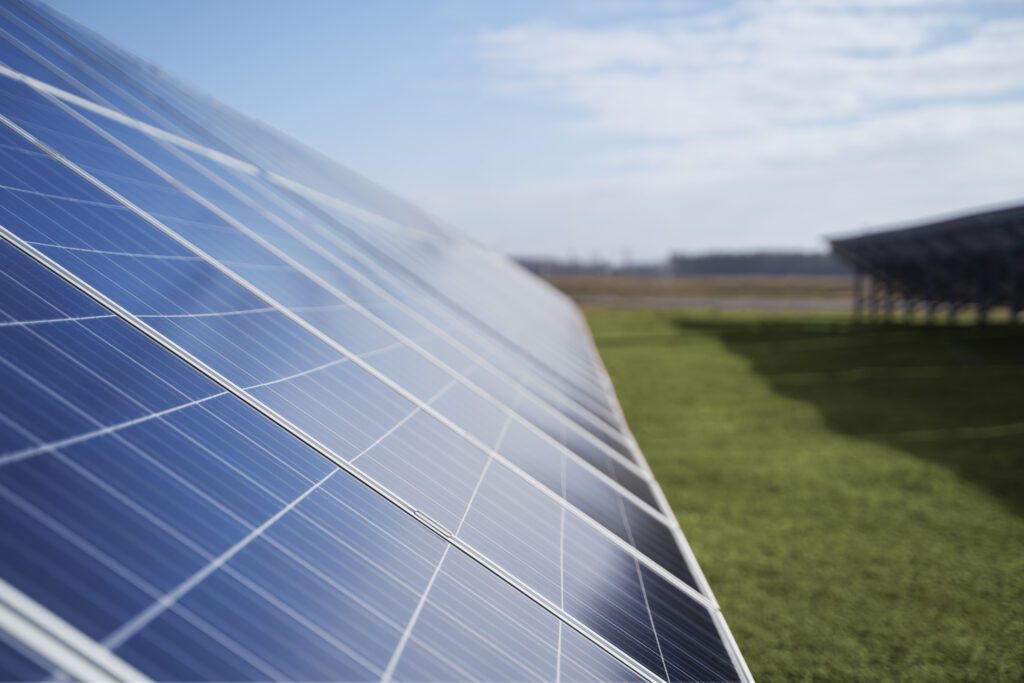Solar Panel Kits with Battery and Inverter: Your Energy Freedom Solution
In recent years, solar power has emerged as a popular renewable energy source. Solar panel kits with battery and inverter offers a convenient and cost-effective way to harness the power of the sun. Whether you’re looking to reduce your carbon footprint or save on electricity bills, these kits provide an all-in-one solution. This guide explores everything you need to know about solar panel kits with batteries and inverters, from how they work to their benefits and installation.
Choosing the Right Location for Maximum Energy Production
When installing a solar panel kits with a battery and inverter, selecting the right location is crucial for maximizing energy production. Consider the following key factors:

Sunlight Exposure: The best spot should get plenty of sun all day, facing south in the north and north in the south for the best sunlight.
Shade Avoidance: Avoid installing panels in shaded areas, as this can significantly reduce their efficiency. Trim trees or remove obstacles that may cast shadows on the panels.
Roof Condition: Ensure your roof is in good condition and can support the weight of the solar panels. Consider the age and material of your roof during the installation planning.
Accessibility: The location should be easily accessible for maintenance purposes. Consider the distance from the panels to the inverter and battery storage location.
Local Regulations: Check with local authorities regarding any regulations or permits required for installing solar panels.
Selecting the Right Battery for Reliable Energy Storage
Choosing the right battery is essential for ensuring reliable energy storage. Common types of batteries used in solar power systems include:
Lead-Acid Batteries: These are the most common but have a shorter lifespan and lower efficiency compared to other types.
Lithium-Ion Batteries: More expensive but offer higher efficiency and longer lifespan. They are also lighter and require less maintenance.
Flow Batteries: A newer technology offering high efficiency and long lifespan, suitable for large-scale energy storage but currently more expensive.
Consider factors such as capacity, efficiency, lifespan, and cost when selecting a battery for your Solar Panel Kits with Battery and Inverter.
Understanding Inverter Options for Efficient Energy Conversion
The inverter plays a critical role in converting the electricity generated by the solar panels into a usable form for your home. Common types of inverters include:
String Inverters: The most common type, suitable for smaller systems but may be less efficient in shaded conditions.
Microinverters: Installed on each panel, offering higher efficiency, especially in shaded conditions, but more expensive.
Hybrid Inverters: Can work with both solar panels and batteries, ideal for off-grid or grid-tied systems with battery backup.
Consider factors such as efficiency, compatibility with your solar panel kits with battery and inverter, and additional features when selecting an inverter.
System Monitoring and Maintenance for Optimal Performance
Regular monitoring and maintenance are essential for ensuring the optimal performance of your solar panel kit. Here are some tips:
Regular Inspections: Inspect your panels regularly for dirt, debris, or damage. Clean them as needed to ensure maximum efficiency.
Battery Maintenance: Check the battery’s water levels and connections regularly and replace it if it shows signs of deterioration.
Inverter Maintenance: Inspect the inverter for any signs of damage or wear and ensure that it is functioning properly.
Monitoring Software: Consider using monitoring software to track the performance of your solar panel kit and identify any issues early.
By following these maintenance tips, you can ensure that your solar panel kit operates efficiently for many years.
Expanding Your System to Meet Growing Energy Needs
If your energy needs change in the future, you may want to expand your solar panel kit. Here are some tips:

Assess Your Energy Needs: Determine how much additional capacity you need to meet your energy needs.
Consult a Professional: Work with a qualified solar installer to assess your current system and recommend the best way to expand it.
Add More Panels: You can easily expand your system by adding more solar panels to your existing array.
Upgrade Your Battery: Consider upgrading to a larger battery to store more energy.
Before expanding your system, consider factors such as available space, budget, and regulatory requirements.
Incentives and Rebates for Cost Savings
Installing a solar panel kit with a battery and inverter may qualify you for various incentives and rebates. Common incentives include:

Federal Tax Credit: In the United States, you may be eligible for a federal tax credit of up to 26% of the cost of your solar panel kit.
State and Local Incentives: Many states and local governments offer additional incentives, such as rebates or tax credits, for installing solar power systems.
Net Metering: Some utility companies offer net metering programs, allowing you to sell excess electricity generated by your solar panels back to the grid for credit on your utility bill.
Check with your local utility company and government agencies to learn more about the incentives available in your area.
Environmental Impact of Solar Power
Using a solar panel kits with a battery and inverter can have a positive impact on the environment. Here are some environmental benefits of using solar power:
Reduced Carbon Emissions: Solar power produces no harmful emissions, helping to reduce your carbon footprint.
Reduced Reliance on Fossil Fuels: By generating your own electricity from the sun, you reduce the need for electricity generated from fossil fuels, which helps to reduce air and water pollution.
Conservation of Natural Resources: Solar power reduces the need for traditional energy sources, such as coal or natural gas, helping to conserve these valuable resources for future generations.
By using a Solar Panel Kits with Battery and Inverter, you can contribute to a cleaner, more sustainable future for our planet.
Real-Life Examples Demonstrating Benefits
To illustrate the benefits of solar panel kits with batteries and inverters, here are some real-life case studies:
The Ahmed Family: The Ahmed family installed a solar panel kit with a battery and inverter on their home and experienced a notable decrease in their electricity bills. They stored excess energy generated by their solar panels in the battery for nighttime use, further diminishing their reliance on the grid.
The Khan Farm: The Khan Farm installed a large-scale solar panel kit with batteries and inverters to power their agricultural operations. By generating their electricity, they were able to reduce their operating costs and enhance their energy independence.
These case studies demonstrate the practical benefits of using solar panel kits with batteries and inverters in real-world scenarios.
Conclusion for Solar Panel Kits with Battery and Inverter
At Bravo Brains Solutions Pvt. Ltd., we understand the value of harnessing clean, renewable energy. Solar panel kits with batteries and inverters offer a convenient and cost-effective way to make the switch to solar power. By following the tips and guidelines outlined in this comprehensive guide, you can make informed decisions about implementing solar power in your home or business. So, are you ready to make the switch? Take the first step today and start enjoying the benefits of clean, renewable energy with Bravo Brains Solutions Pvt. Ltd.
FAQs
- What are solar panel kits with batteries and inverters?
Solar panel kits with batteries and inverters are all-in-one solutions for harnessing solar power. They include solar panels to capture sunlight, batteries to store excess energy, and inverters to convert that energy into usable electricity for your home or business.
- How do solar panel kits with batteries and inverters work?
Solar panels capture sunlight and convert it into electricity, which is then stored in batteries for later use. The inverter converts this electricity from direct current (DC) to alternating current (AC) for use in your home.
- What are the benefits of using solar panel kits with batteries and inverters?
Some benefits include reduced electricity bills, increased energy independence, and a reduced carbon footprint. They also provide backup power during outages.
- How do I choose the right solar panel kit with batteries and inverters for my needs?
A: Consider factors such as your energy needs, location, budget, and available space. Consult with a professional installer for personalized recommendations.
- Are solar panel kits with batteries and inverters suitable for all homes?
A: While they can be installed in most homes, factors such as roof condition, sunlight exposure, and local regulations should be considered. It’s best to consult with a professional installer to assess your home’s suitability.
- What maintenance is required for solar panel kits with batteries and inverters?
A: Regular inspections, cleaning of panels, and monitoring of batteries and inverters are recommended. It’s also important to keep an eye on system performance and address any issues promptly.
- Are there any incentives or rebates available for installing solar panel kits with batteries and inverters?
A: Yes, there are federal tax credits, state and local incentives, and net metering programs available in many areas. Check with your local utility company and government agencies for more information.
- How can I expand my solar panel kit with batteries and inverters in the future?
A: You can expand your system by adding more panels, upgrading your battery, or consulting with a professional installer for recommendations based on your energy needs.
- What environmental benefits do solar panel kits with batteries and inverters offer?
A: Solar power reduces carbon emissions, reduces reliance on fossil fuels, and helps conserve natural resources, contributing to a cleaner, more sustainable future.
- Are there any real-life examples of solar panel kits with batteries and inverters in use?
A: Yes, there are many examples of homes and businesses using these kits to reduce their energy bills, increase energy independence, and reduce their carbon footprint. Case studies and testimonials are available from various sources.
These FAQs provide concise answers to common questions about solar panel kits with batteries and inverters, helping you make an informed decision about implementing solar power in your home or business.
Wow, awesome blog layout! How long have you been blogging for?
you make blogging look easy. The overall look of your web site
is great, as well as the content!
Nice post. I was checking continuously this blog and
I am impressed! Very helpful info particularly the last part 🙂 I care for such info a lot.
I was seeking this particular info for a long time. Thank you and best of luck.
Hurrah, that’s what I was exploring for, what a stuff!
present here at this website, thanks admin of this web page.
I needed to thank you for this excellent read!! I absolutely enjoyed every little bit of
it. I have got you book-marked to look at new things you post…
Good day I am so glad I found your webpage, I really
found you by accident, while I was researching on Digg for something else, Regardless I am here now and would just like to say thanks a lot for
a remarkable post and a all round enjoyable blog (I also love the
theme/design), I don’t have time to read it all at the minute but I have bookmarked it and also
added in your RSS feeds, so when I have time I will be back to read much more,
Please do keep up the excellent b.
I constantly emailed this blog post page to all my associates, as if
like to read it then my links will too.
Hello, yeah this paragraph is genuinely fastidious and I have
learned lot of things from it regarding blogging.
thanks.
Highly descriptive blog, I loved that a lot. Will there be a part 2?
I visited several blogs except the audio quality for audio songs existing at this web site is truly superb.
I just like the valuable information you supply to your articles.
I’ll bookmark your weblog and check again here regularly.
I’m somewhat sure I will learn plenty of new stuff right here!
Good luck for the next!
What i don’t realize is if truth be told how you are no longer really
a lot more neatly-favored than you might be right now.
You’re so intelligent. You know therefore considerably when it comes to this subject, made me for
my part imagine it from numerous numerous angles. Its like men and women aren’t interested until it is something to accomplish with Girl gaga!
Your own stuffs outstanding. All the time care
for it up!
My brother suggested I might like this blog. He was totally right.
This post truly made my day. You can not imagine just how much time I had
spent for this info! Thanks!
Its like you read my thoughts! You appear to grasp so much approximately this, such as you wrote the guide in it or
something. I think that you simply can do with a few
p.c. to force the message house a bit, however other than that, that is excellent
blog. An excellent read. I will definitely be back.
Thank you for another fantastic post. The place else may anyone get
that kind of info in such a perfect approach of writing?
I’ve a presentation subsequent week, and I’m on the search for
such information.
Hurrah, that’s what I was looking for, what a material!
existing here at this webpage, thanks admin of this website.
Excellent post. Keep posting such kind of information on your site.
Im really impressed by your site.
Hi there, You’ve done an incredible job. I will certainly digg it
and for my part suggest to my friends. I’m confident they will be
benefited from this web site.